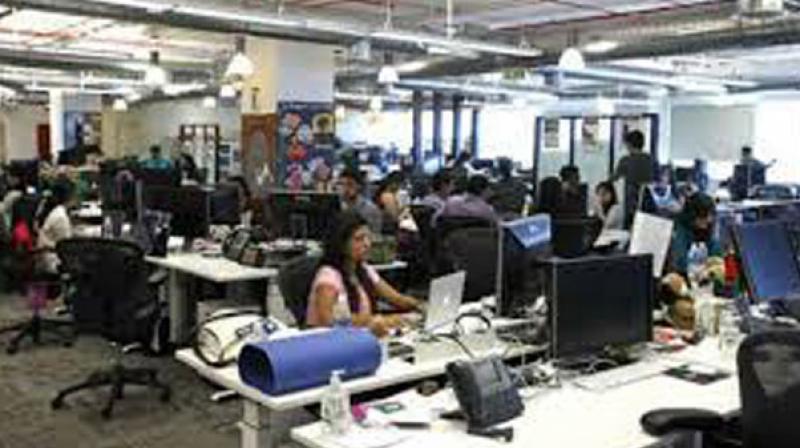Hyderabad: Demand for office space up with increase in firms
In 2018, Hyderabad's residential market inclusively recorded a number of new launches, at 15,200 units.

Hyderabad: Hyderabad is witnessing strong traction for office space and is expected to deliver 70 million sq. ft in the city’s western part in the next five years.
Last year saw the absorption of 6.40 million sq ft office space across the city. Key transactions in the last three months of 2018 included deals such as Facebook (6.4 lakh sq ft), Accenture (3.73 lakh sqft), and CoWrks (2.5 lakh sq ft) among others. According to a report by Vestian Connect, which provides investment and consultancy services, Hyderabad saw 2.6 million sq. ft of office space absorption and 3,810 units of new launches in the residential market in the October-December period last year. Apart from the IT/ITeS sector and manufacturing companies, considerable demand for office space also came from co-working space operators. With this demand forecast, the new supply has not been able to match current levels. Consequently, tight vacancies were seen in Madhapur and Gachibowli, thereby pushing rentals up by nearly 5-7 per cent on a year-on-year basis, as per the Vestian Connect Outlook.
This is due to the expansion taken up by several companies and favorable investment climate in the west zone. Even in the residential segment, the report says: “The year 2018 inclusively recorded the number of new launches in the city at 15,200 residential units, out of which the western region of the city accounted for the lion’s share, to the tune of over 70%.”
A majority of the new launches were in locations such as Manikonda and Kondapur, which have gained prominence as residential neighbourhoods because of proximity to employment hubs.
There were a number of new launches in north-western peripheral locations such as Kukatpally and Bachupally.
Experts say that the western part of the city will be chaotic as it would add over 60 per cent of the existing population in the next five years. They point out that having a regional ring road alone will not help, but social infrastructure and physical should be developed to balance the population explosion.
Mr S. Ram Reddy, president of Credai, Hyderabad, said: “When 70 million sq ft is coming up only on the western side, the consequences of this addition need to be immediately addressed with various departments and experts. The state government should right away intervene to ensure balanced development across all parts of the city. Only in the western part and some parts of south India is this happening while remaining parts are sleeping.”
He wondered how the western part of the city would manage infrastructure with urban explosion. While pointing out that ORR and the regional ring road are not a solution to balance development, he said, “Physical and social infrastructure is needed. But at the same time, it should be affordable. Social infrastructure includes education, health, security, shopping facilities. Roads, water, drainage power should be developed as part of physical infrastructure.”
Experts feel that incentives need to be given on a par with what was given for development of the western part apart from penalising those who pick western side.
“Government should involve, make land available and provide incentives on other sides of the city,” said Mr Shekar Reddy, president of Hyderabad Chapter of CII’s Indian Green Building Council. “They should stop selling and allotting lands completely in the west zone and move it to the east, north and south.”
He said the government should offer incentives to people who are moving. “Initially, Mindspace, apart from giving land, offered Rs 25,000 subsidy to every employee. They deducted the money from land cost, gave stamp duty and power concession. Something like this should be offered in the north and east, so that companies and people will move to the other parts of the city,” Mr Shekar Reddy said.
He added that “walk to work” should be brought in to make it an environment-friendly city, as with the current heavy traffic movement to West Zone, pollution levels in the city are increasing. “We have been pressuring the government for 2-3 decades that this is not correct master plan as growing on one-side is not good.”

